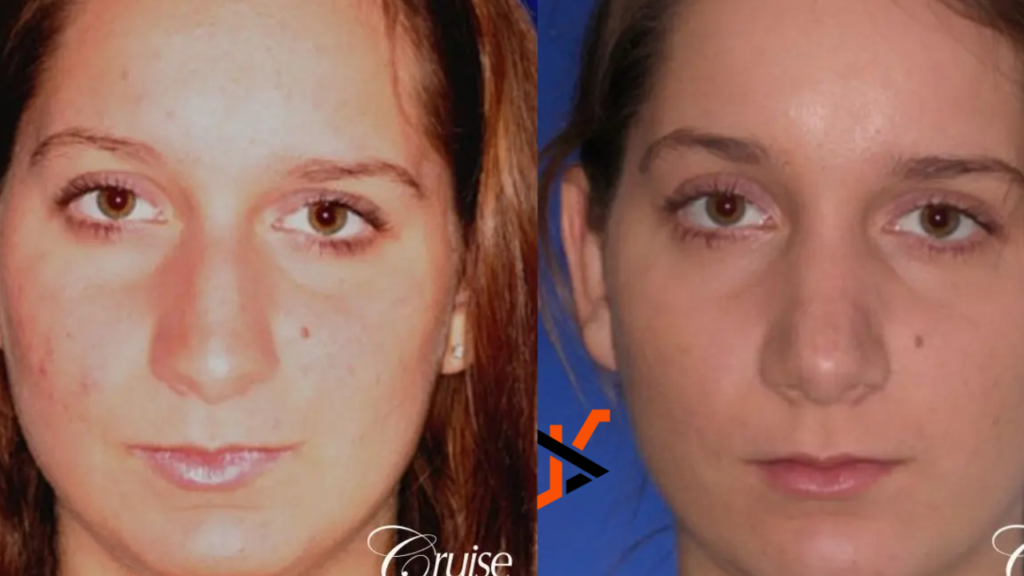Luna Clinic is excited to share insights into the various types of rhinoplasty, a procedure with a rich history and significant advancements. We aim to help patients understand the wide range of options available, whether for aesthetic improvements, functional enhancements, or both. Rhinoplasty not only offers physical benefits but also can significantly boost self-confidence.
Primary Rhinoplasty
Primary rhinoplasty is the initial surgery performed on the nose to correct aesthetic concerns such as size, shape, or proportion. The procedure aims to achieve a natural-looking result that complements the patient’s facial features.
Revision Rhinoplasty
Also known as secondary rhinoplasty, this procedure corrects or improves the results of a previous nose surgery. It addresses dissatisfaction with the initial outcome, functional problems, or complications. Given its complexity, it requires a highly skilled surgeon.
Functional Rhinoplasty
This type of rhinoplasty focuses on improving nasal function, particularly breathing. Conditions like a deviated septum or nasal valve collapse are addressed, often combining aesthetic improvements with functional corrections for overall nasal health.
Cosmetic Rhinoplasty
Primarily concerned with enhancing the nose’s appearance, cosmetic rhinoplasty includes changes such as reshaping the nasal tip, reducing a dorsal hump, or altering the size and shape of the nostrils. The goal is a harmonious look that meets the patient’s aesthetic desires.
Open Rhinoplasty
Open rhinoplasty involves an incision across the columella. It provides better visibility and access to nasal structures, allowing for precise modifications. While it may leave a small visible scar, it is advantageous for complex cases.
Closedrgical Rhinoplasty
Using injectable fillers, non-surgical rhinoplasty alters the shape of the nose without surgery. Ideal for minor adjustments, the results are temporary, lasting about a year, offering a non-invasive option with no downtime.
Ethnic Rhinoplasty
Tailored to meet the unique needs of patients from diverse ethnic backgrounds, ethnic rhinoplasty respects and enhances natural characteristics while addressing specific concerns. It requires cultural sensitivity and an understanding of different nasal anatomies.
Teen Rhinoplasty
Special considerations for teenagers include psychological and physical maturity. Surgeons recommend waiting until the nose has fully developed, around 16-18 years, ensuring stable results. Teen rhinoplasty aims to address significant functional or aesthetic concerns impacting confidence and quality of life.
Male Rhinoplasty
Men often seek a more masculine and defined nose. Understanding the aesthetic goals and techniques suitable for male patients is crucial for satisfying results.
Septorhinoplasty
Combining rhinoplasty with septoplasty, this procedure corrects a deviated septum while addressing functional and aesthetic concerns, improving breathing, and enhancing appearance.
Reduction Rhinoplasty
Reduction rhinoplasty reduces the size of the nose, addressing concerns like a large nasal hump, wide nostrils, or an overall large nose by removing or reshaping bone and cartilage.
Augmentation Rhinoplasty
This procedure involves adding structure to the nose using grafts from cartilage, bone, or synthetic materials to build up a flat nasal bridge or enhance the nasal tip.
Post-Traumatic Rhinoplasty
Addressing nasal deformities from injury or trauma, post-traumatic rhinoplasty restores both function and appearance, often involving complex reconstruction of nasal structures.
Reconstructive Rhinoplasty
Performed to restore the nose after severe damage or surgery, such as cancer resection, reconstructive rhinoplasty involves multiple procedures and advanced techniques for functional and aesthetic restoration.
Rhinoplasty Techniques
Modern rhinoplasty uses advanced surgical instruments and tools, including 3D imaging and endoscopic techniques, significantly improving precision and outcomes.
Recovery and Aftercare
Recovery varies based on the procedure type and individual factors. Proper aftercare, including managing swelling and bruising, avoiding strenuous activities, and following the surgeon’s instructions, is essential for optimal healing and results.
Choosing the Right Surgeon
Selecting a qualified and experienced surgeon is crucial for a successful Turkey rhinoplasty. Look for board certification, patient reviews, and before-and-after photos. A thorough consultation to discuss goals and ask questions ensures comfort with the surgeon’s approach and expertise.
At Luna Clinic, we provide personalized consultations to help you achieve the best results, whether for cosmetic improvements, functional corrections, or a combination of both. Transform your look and enhance your confidence with us!
Contact Information:
Company Name: Luna Clinic
Contact Person: Luna Clinic Team
İstanbul Cerrahi Hastanesi
Fulya, Ferah Sokağı no: 22, 34365 Şişli/İstanbul
Phone: 00905528827344
Email: abdulaziz@flymedi.com
Website: https://lunaclinicturkey.com/

